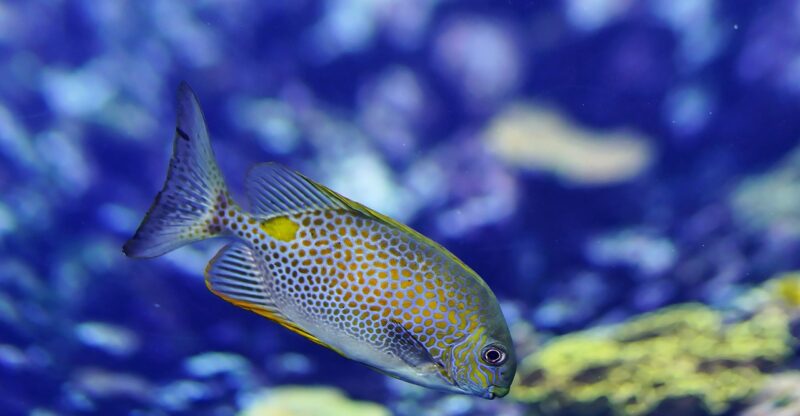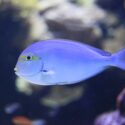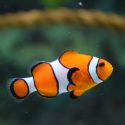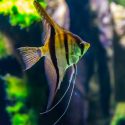9 Reasons Why Aquarium Fish Die
For aquarium owners, there’s nothing as frustrating as seeing your fish die time and again and you can’t figure out why.
Fish require a delicate balance of various parameters to survive in a fish tank. Everything from temperature to pH needs to be in the right range or else your fish will get sick or die.
To help you keep your fish happy and alive, here are the 9 biggest reasons why aquarium fish die. Minimise or avoid these and you’ll have a thriving aquarium.
1. Old Age
Sometimes it’s not your fault when some of the fish die. They could have simply reached the end of their lifespan.
Some fish like Bettas and Killifish live for as little as two years while others like goldfish and clown loaches can leave for up to 10 years or longer.
Some symptoms of ageing fish include reduced appetite, weight loss, bulging eyes and discoloration. Sometimes, however, there may be no symptoms at all. The fish will be fine one day, then dead the next.
What to do: If you notice worrying symptoms in your fish, put the affected ones in a quarantine tank. If they get better, then they were probably just sick. If they remain in bad shape, it’s probably old age.
You should also do a water test to make sure all the parameters are in the right range.
2. Overcrowding
Fish need more space than most people think. That small fish bowl filled with bettas is terrible for the fish. It can quickly turn into a toxic environment that kills off the fish.
Overcrowding stresses the fish, which can make them sick, slow down growth and lead to death.
Another reason overcrowding is dangerous for fish is that it causes a rise in ammonia and nitrite levels because of all the fish waste.
Ammonia and nitrite are highly toxic to fish. Acceptable levels are zero.
Overcrowding can also lead to increased aggression and fighting in the aquarium. The fish could hurt and kill each other.
What to do: It’s important to size your fish tank according to the type and number of fish you want to keep. If you notice the fish are stressed (odd swimming patterns, aggression, discoloration etc.), take out some of the fish and put them in a separate tank or transfer all the fish to a bigger tank.
3. Poor Water Quality
All animals are very sensitive to changes in their environment. Humans survive in air that has 21% oxygen.
If it goes down just by one percentage point, there’s a risk of death. An increase in dangerous gases like carbon dioxide is just as dangerous.
The same is true for fish. Their water needs to be just right for their survival. Bad water quality is one of the leading causes of fish death in aquariums.
The specific cause is usually high levels of ammonia, nitrites and nitrates. But other things like pH and chlorine levels can also kill your fish.
What to do: Regular water changes are essential in maintaining good water quality. You should also carry out frequent water tests (get a home test kit) so that you can catch problems early before they kill the fish.
4. Poor Fish Acclimation
It is common for fish to die soon after you’ve brought them home from the store. Many people blame the pet store for selling them weak or unhealthy fish.
In most cases however, poor acclimation is to blame for the deaths. The environment the fish were in at the store is probably very different from your aquarium environment. The shock and stress from being exposed to a different temperature, pH and level of light can easily kill the fish.
What to do: Here are some tips for acclimating your new fish.
- Test the water in your fish tank to make sure all the parameters are in the right range. The new fish will already be under some stress. You don’t want to stress them any further by exposing them to ammonia or nitrites.
- Before you take the fish out of the box, turn down the aquarium lights. Take the bag with the fish and place it in the fish tank. Let it float there for about 10-20 minutes to allow the temperature in the bag to match that of the aquarium.
- Next, open the bag and roll the top of the bag 3 or 4 times to create a floatation ring. This will allow the bag to float open in the aquarium.
- The next step is matching the pH of the bag to that of the aquarium. If the difference is too wide (even a 1.00 difference is too much), the fish could experience pH shock and die. Measure the pH of the fish tank and the water in the bag.
- Add half a cup of water from the fish tank to the bag and wait about 15 minutes for the fish to adjust to the new chemistry. Measure pH again. Keep adding a bit of the aquarium water to the bag until the pH matches.
- Now you can add the new fish to the aquarium. If there are already fish in the fish tank, distract them with a bit of food. Then take a net and carefully transfer the new fish into the tank.
- Important: Dump out the water in the bag. Do not add it to the fish tank along with the new fish as it could contain dangerous pathogens.
- Monitor the new fish over the next few days for signs of illness or stress.
Tip: If you have a spare fish tank, quarantine the new fish there until you are sure they are healthy and won’t pass any new diseases to your current fish.
5. Not Cycling a New Fish Tank
Another common mistake new aquarium owners make, in addition to not properly acclimating fish, is not cycling their new fish tank.
A proper aquarium is a complex ecosystem with symbiotic relationships between fish and bacteria. Bacteria in the substrate and the biofilter break down ammonia into nitrites and then nitrates. This is called the nitrogen cycle.
These nitrifying bacteria need time to grow. So getting a new fish tank and dumping in fish soon after will lead to high ammonia levels, which will kill the fish.
What to do: If you have a new aquarium, wait before you add any fish in. It takes 4-8 weeks for a new aquarium to cycle. But you can reduce this time by buying a biofilter or substrate that’s already seeded with nitrifying bacteria.
To start the cycling process, you’ll need to add ammonia to the tank. You can then keep testing the level of ammonia and nitrites to determine how well the cycling process is going.
Once ammonia and nitrites are at zero, your new fish tank is ready.
6. Disease
Even if you do everything right, fish can still get sick and die. It could be that you missed something such as the wrong pH or a bit too much ammonia. In other cases, it can be difficult to determine exactly what’s making the fish sick.
What to do: Look out for symptoms of sick fish like lethargic swimming, lack of appetite, bulging eyes and others. If you have a spare tank, immediately quarantine the sick fish to protect the rest of the fish.
Also test the water to make sure everything’s right. Sometimes, correcting the pH or salinity is enough for the sick fish to recover.
You can also try treatments like aquarium salt and various medications. Talk to a vet for advice.
7. Wrong Water Temperature
While fish can tolerate temperature changes for some time, keeping them in water that’s too cold or too warm will cause stress and could lead to death.
The right water temperature is also essential for the nitrogen cycle.
The ideal temperature range for most fish is 23-27 degrees Celsius. But it may be different for certain kinds of fish. So you need to know what temperature range is ideal for your particular fish.
What to do: Buy an aquarium thermometer to monitor water temperature. If it gets too cold, use a heater and if it is too warm, use a chiller or some other cooling method.
8. Overfeeding
Your fish will not tell you when they are full. They could keep eating as long as there’s food. But overfeeding fish often leads to a toxic environment for them.
Here’s what happens. Overfeeding leaves a lot of food uneaten and it sinks to the bottom of the aquarium. Because they are eating more, the fish produce more waste.
The build up of organic material causes a spike in ammonia and nitrites, both toxic for the fish.
What to do: You should feed the fish only the amount of food they can finish in 1-2 minutes. Feeding them once or twice a day is adequate.
9. Overcleaning The Fish Tank
Yes, there’s something like overcleaning a fish tank. A fatal mistake some aquarium owners make is removing the gravel or sand and scrubbing it clean, then putting it back into the aquarium. That’s a quick way to kill your fish.
That’s because you’ve gotten rid of the nitrifying bacteria and now there’s not enough bacteria to get rid of the ammonia and nitrites.
What to do: You should only change the water and vacuum the gravel. That’s the only cleaning you need to do inside a fish tank. Never remove the substrate.





